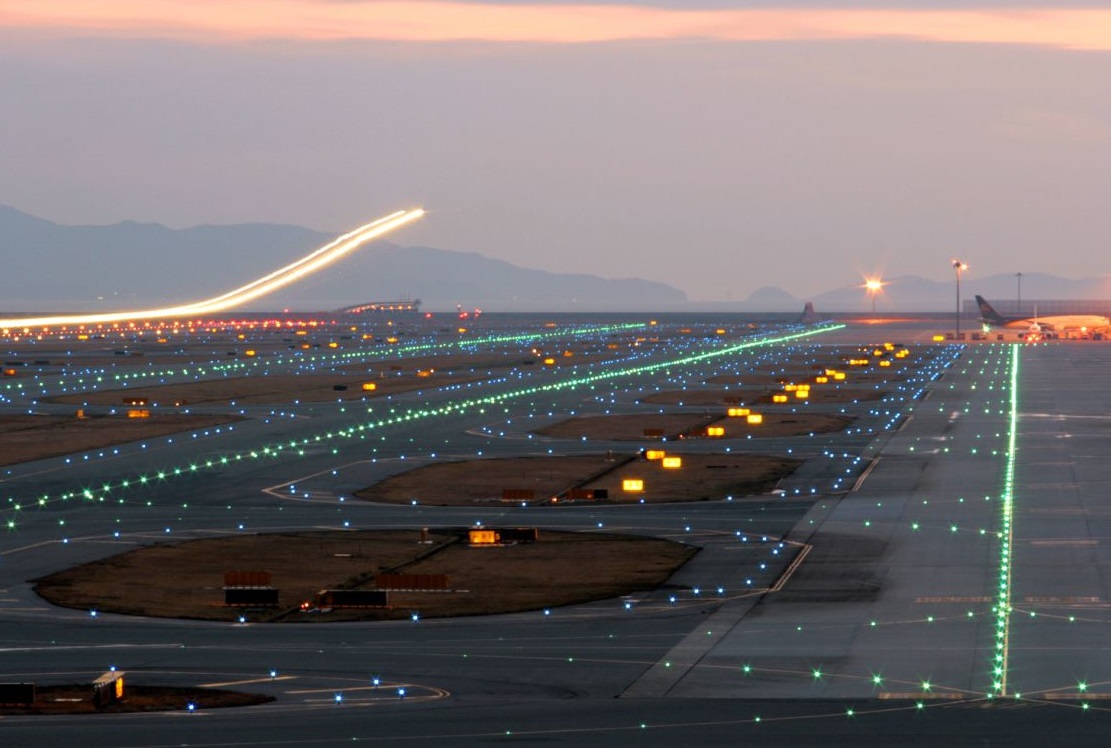Red, Blue, Green, Amber, and White lights are the colored lights around any airport and pilots use them daily basis flying from one airport to another. It is absolutely crucial for pilots to know the meaning of lights during especially landing in low visibility.
Airports lights are standard all around the world. The regulations for airport lighting come from ICAO Annex 14. In this blog, I will discuss only the most common lighting system for student pilots in any Airport. For details to learn more, I recommend download ICAO ANNEX 14.
Let’s start our discussion with Taxiway lights.
TAXIWAY LIGHTS
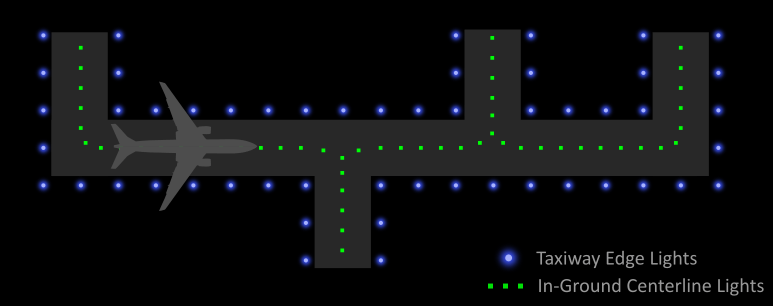
Taxiway edge lights are always steady blue and also called Omnidirectional. It means they can be seen from anywhere. The Centerline lights are very bright Green, you can see them even in worse weather in low visibility. These lights are installed in busy airports.
Taxiway LEAD ON lights is the lights that lead the aircraft to the runway. These lights are alternating Green and Yellow.
Yellow/Amber Hold short lights are called Runway guard lights. They are flashing yellow lights for low visibility conditions. Pilots need clearance to cross Runway guard lights and must use caution for intercepting other aircraft.
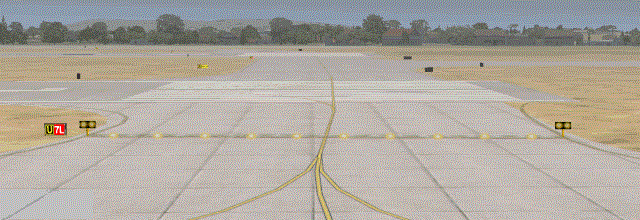
Red Stop bar lights are steady unidirectional Red lights in the taxiway. You can call them runway Status lights. These lights can be switched on and off automatically. Remember Red means STOP- whenever you see RED, don’t even think about moving, you need clearance. Red Stop bar lights on means active traffic on the runway or an aircraft is landing imminently. These lights is extinguished or switched off before an aircraft can proceed on the Runway for Takeoff operation.
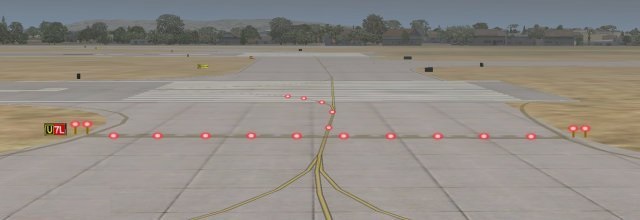
- Taxiway Edge light – Omni directional Blue
- Taxiway Centerline light – Green
- Taxiway Hold Short – Red / yellow
- Taxiway Lead on/off light – Alternating Green & Yellow
- Taxiway Stop bar light and Runway guard light — steady Red, flashing Yellow
Runway Lights
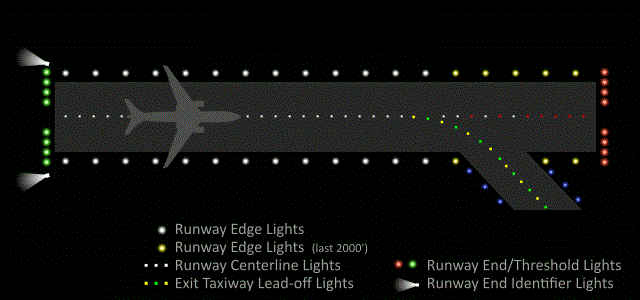
Runway lights are used for low visibility operations associated with bad weather. These lights are also used by IFR pilots.
Did you ever see a set of GREEN lights on each side of the runway? These lights are called Runway End/Threshold lights. These lights indicate the beginning of the runway and they are BIDERICTIONAL. The reason why they are Bidirectional because a pilot landing on Runway 09 for example, will see a set of GREEN lights as Threshold lights and at the End of Runway will see a set of RED lights indicating the end of the Runway. On the other hand, a pilot landing Runway 27, will see the first set of GREEN lights (Threshold lights) and at the end of Runway will see a Set of RED lights indicating Runway End lights.
Sometimes, Pilot will see White Strobe flashing lights places beside the Green Threshold lights and these lights are called Runway End Identifier Lights (REILs). These strong White flashing lights indicate a positive identification of approach end of a particular Runway in an airport. REILs flashes within 60 to 120 frequency per minute.
Runway Edge lights are steady White and but they become amber/yellow last 2000 feel of Runway. It is an indication that Runway end is approaching which is very useful information for a pilot for both takeoff and landing decision making. The lights within the last 2000 feet are also Bidirectional; means they will be seen as steady white from other directions of the Runway.
Runway Centerline lights are Steady White and they are used for directional control of the aircraft during takeoff and landing. These lights are 50 feet apart just like the Centerline markings. The last 3000 feet to 1000 feet of the Runway Centerline lights become alternative White and Red and the last 1000 feet of the Runway lights become RED indicating Runway End is approaching. All these Centerline lights from 3000 feet to the end of the Runway are Bi-directional. They will be seen opposite from other directions of the Runway. Knowing the distance well, pilots can decide not to float for long during landing at night or in poor visibility.
Taxiway Lead Off Centerline lights is alternating Green and Yellow/Amber. This is an indication for the pilot to enter a Taxiway from designated Runway.
- Runway Centerline Light
- Steady White
- Last 3,000-1000 foot: Alternating Red & White
- Last 1,000 foot: All Red
- Runway Edge Lights
- Steady White
- Last 2,000 foot, or half the runway: Yellow/Amber
Runway Touchdown Lights
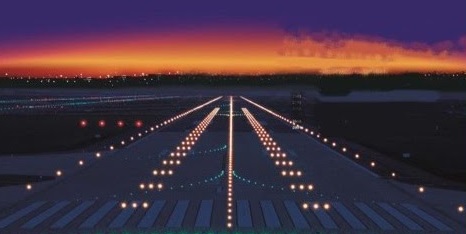
Touchdown lights are White Rows of steady White lights on each side of the Centerline starting from 100 feet from the Threshold to the first 3000 feet of the Runway. Do you know the purpose of these lights? These lights help the pilot to take go around/missed approach in Low visibility when pilots have to land beyond the touchdown lights. If you don’t see touchdown lights in landing during poor visibility, you should exercise go-around because you might not have enough Runway to stop the Airplane upon touchdown.
Important Note: Runway centerline and touchdown lights are used for CAT II, CAT III runways. They are also required for CAT I runways where Runway Visual Range (RVR) is below 2400 feet. Runway Centerline lights also is a requirement for take off operation when RVR is below 1600 feet.
Runway Approach Lights
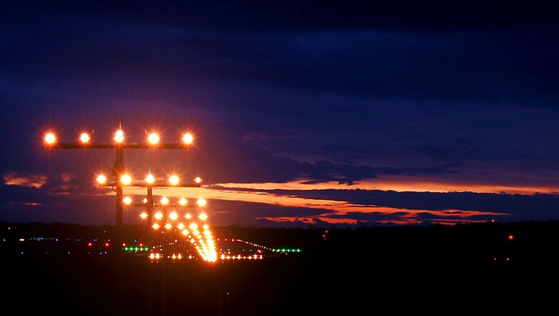
When you drive near an Airport, did you ever notice dozens of orange light bars near the end of the Runway? This forest of lights is called Approach lights. These lights include series of lightbars, strobe lights, or the combination of both. They guide you to the Runway during Night landing or landing in poor visibility. Once you have your IFR rating, you have to know Approach lighting system well because they are for transition from Instrument flight to Visual flight.
Talking about Approach lights, you will see a ball of lights traveling toward the Runway at high speed. Pilots call them Rabbit!! The configuration is an indication of whether the runway is Precision or Non-Precision Runway.
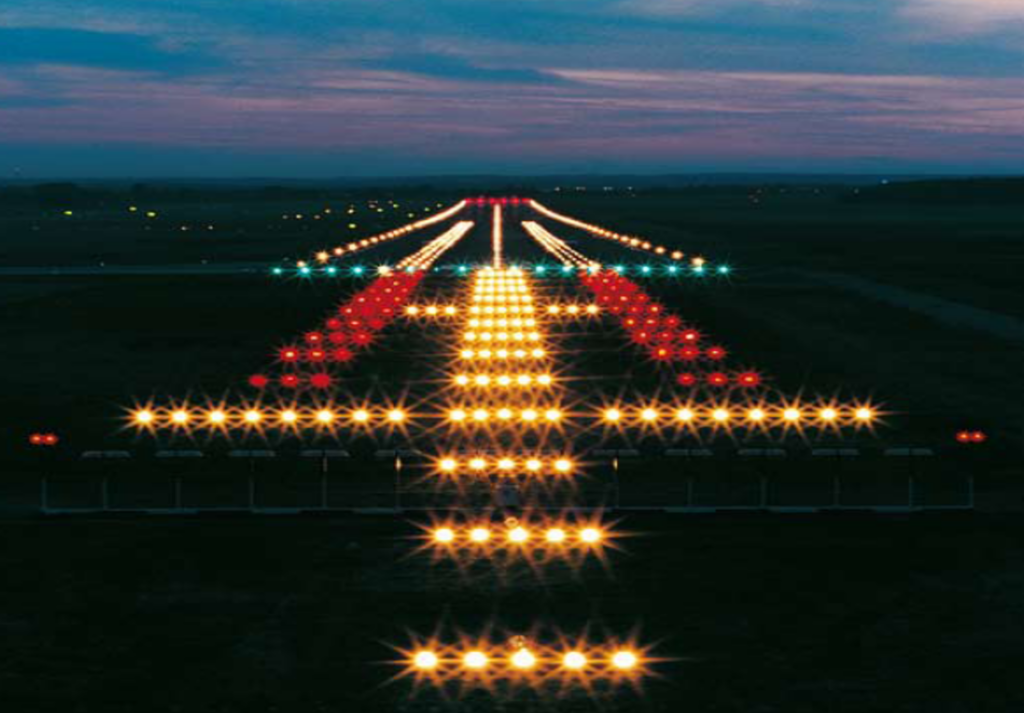
There are many different kinds of Approach lighting systems. Approach light may begin as far away as 3000 feet along the Extended precision instrument Runway Centerline. It includes sequenced flashing lights, which seems a ball of light travelling toward the Runway at very high speed (Guiding to the Runway).
There are a lot of different kinds of Approach lights such as MALSR, MALSF, SALS, SSALS, SSALR, SSALF, ODALS, ALSF-1, ALSF-2, CALVER I / ICAO-1 HIALS, CALVERT II / ICAO-2 HIALS, LADIN etc.
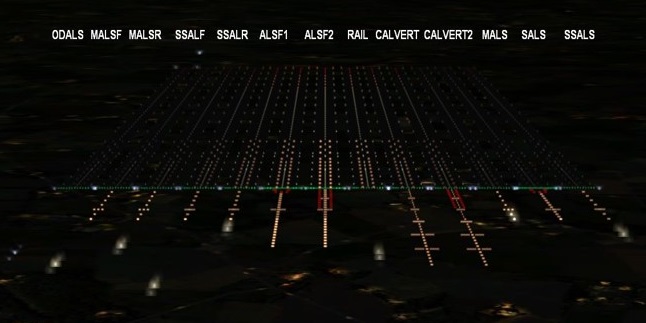
I will explain these approach lights in my other blog for IFR student pilots. Keep updated and till then fly safe!
